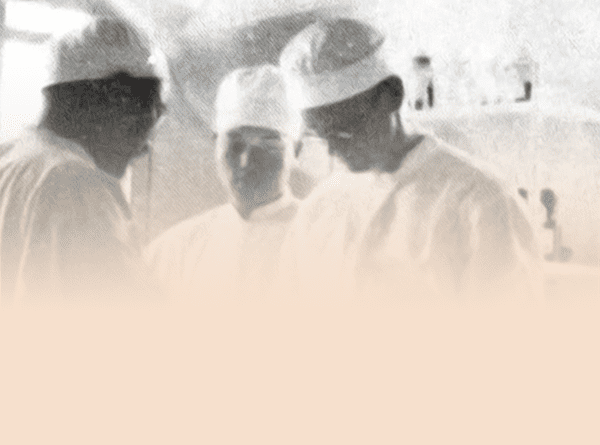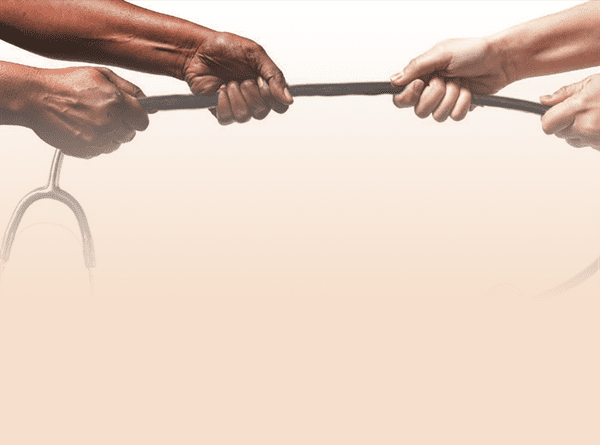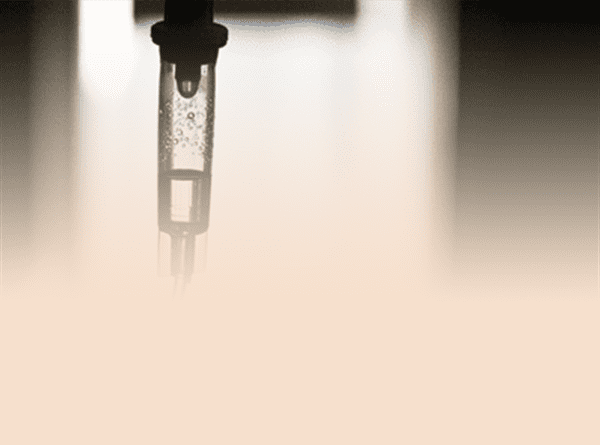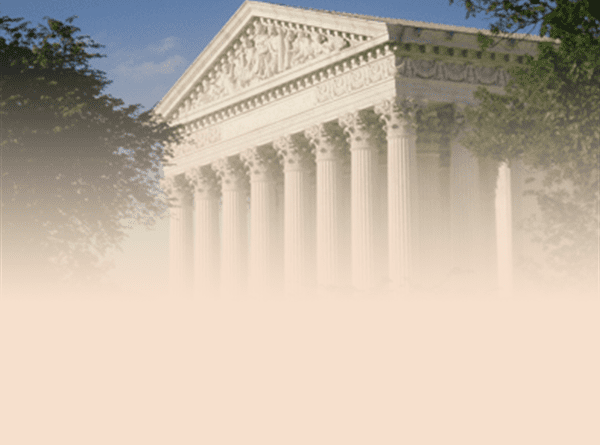Are We Safer From Malpractice in the 21st Century?
By Wendy B. Kang, M.D., J.D.
Today's Christian Doctor, Fall 2010, Volume XLIII, Number 2.
Malpractice suits continue to be affected by today's societal and legal forces.
He was shocked at the attorney's letter. A patient who had seemed pleased with her care was suing him for reckless and wanton negligent care. After the initial denial, his anger flared. He had done everything right! Or had he? He began replaying his previous encounters with the patient through his mind. He began to feel that other physicians and nurses were questioning his competence. Sleep became elusive. Thoughts of suicide crept in. Why had God allowed this evil to invade his life?
Medical malpractice lawsuits continue to plague physicians who strive to provide the right care for patients. At the height of the medical malpractice crisis in 1977, two articles were published in the Christian Medical Society journal to explore both sides of the issue. "Is the Law to Blame?" by George Chapman focused on the legal aspects creating the crisis, and "Physicians Can Heal the Hurt" by C. Gene Wheeler concentrated on advice for physicians to overcome malpractice struggles. Both articles emphasized that nothing is more sacrosanct than the patient-physician relationship, but societal and legal forces are eroding this bond. There are four elements to the tort of neg I igence under which medical malpractice falls. By agreeing to care for a patient, the physician takes upon himself the duty to provide care that is considered standard, that which a reasonable physician under similar circumstances would do. When that duty is breached and the doctor is the proximate or foreseeable cause to the patient's injury, the patient becomes the plaintiff and should be compensated for damages. Defense attorneys try stopping any cause of action by proving non-existence of duty, breach or direct cause of harm by the physician. Medical experts on opposing sides duel to be the more credible agents to sway judge and jury. The plaintiff's attorneys working on contingency fees hope for monetary sums from which they might take 30 to 50 percent before the patient receives any payment. The physician feels powerless, bewildered by legal maneuvers and professionally isolated.
As a lawyer, Mr. Chapman's article pointed out several legal principles which he believed contributed to the increase in medical malpractice cases. He stated, " ... key changes in our local court system and substantive law have produced the flood of lawsuits being filed against physicians, hospitals and nurses." He went on to explain these changes such as the loosening of the statute of limitations to allow more time for discovery of a mistake, such as a lap sponge left inside a patient. This would appear to be fair to the patient, especially if the physician had the information and intentionally withheld such knowledge from the patient. Another change was the loss of charitable immunity which exposed physicians who worked at non-profit hospitals to be sued. In addition, the "Captain of the Ship" legal doctrine made the physician responsible for negligence of those under his or her supervision. The right of patients to be informed of the risks versus benefits of treatments created more litigation whereby patients alleged lack of informed consent. As a result, courts became more unwilling to give out summary judgments whereby cases were dismissed as a matter of law. Matters of fact had to be sorted out by a jury with the help of expert witnesses. The use of national standards of care instead of community practices allowed physicians from outside the locale to be more willing to testify.
The majority of medical malpractice cases are based upon 19th century common law. General principles from previous court rulings regulated subsequent decisions; this is the legal principle of "stare decisis." Judicial precedents are difficult to change dramatically. Hence the four elements of medical malpractice remain intact, as well as most of the changes Mr. Chapman discussed.
On the other side, Dr. Wheeler wrote his article about malpractice from his perspective as a surgeon. He focused on how malpractice affects healthcare professionals, and offered advice for maintaining a high level of care despite government and legal intervention. He urged physicians to protect the patient-physician relationship while also protecting their freedom to work in a free market status. He also urged physicians to practice as if they did not carry malpractice insurance. He encouraged good patient rapport and setting aside $40 to $200 weekly into a trust fund to settle legal claims. He advocated spending time discussing alternative treatments and seeking patient participation to arrive at mutually acceptable solutions. He also claimed that all physicians should "consider giving up any government payments [they] might be receiving." Most readers would agree with Dr. Wheeler that excellent communication with patients is a key to avoiding lawsuits. However, few of us can agree to give up government payments given the high proportion of Medicare and Medicaid patients we serve. A dying breed is the physician who is a "self-employed businessman" able to maintain a solo practice with fee-forservice reimbursements.
Since these articles were originally published, many changes have taken place. Common law was supplemented by statutory law, mostly at state levels. The definition for "standard of care" evolves so constantly that "elusive" might serve as the best definition. Physicians have a duty to use reasonable care and diligence, based upon national specialty standards, in caring for their patients. Consent for treatment must be informative and also include risks versus benefits as to alternative forms of treatment, including non-treatment. In some states, information the patient would regard as material to decision-making appears to be as important as what physicians think relevant. Increasing recognition of patient rights, including the right to make autonomous decisions, has expanded the doctrine of informed consent such that state laws now specify which possible risks must appear on consent forms for procedures.
Unfortunately, medical liability cases are not going away. Until some federal level of tort reform is achieved, physicians will continue to practice defensive medicine. Evidence does not support such practice; physician perceptions do. According to a 2011 New England Journal of Medicine article analyzing data from a single medical liability insurer profiling 40,000 physicians of 25 specialties, 7.4 percent of physicians had a claim annually. By age 65, 75 percent of physicians in low risk specialties and 99 percent in high risk fields are projected to face a malpractice claim. The reassurance to physicians comes from the fact that the high likelihood of claims does not result in payments. Annual rates of claims leading to indemnity payments ranged from only 1 percent to 5 percent across specialties. Awards in excess of $1 million occurred in less than 1 percent of all payments.1 Dr. Wheeler's suggestion in 1977 to set aside $40 to $200 weekly might create personal fiscal deficit in paying today's average indemnity of $274,887.
Just like technology changed the way medicine is practiced, it changed malpractice. The disturbing trend for future medical liability revolves around electronic health records (EHR) and social media communications with patients. By now physicians are aware of "Dr. Flea" who ranted online about his ongoing medical lawsuit, unaware that the opposing attorneys were equally internet savvy. His lack of professionalism necessitated a quick court settlement.
The American Medical Association established a policy that physicians should not use electronic communications to establish a patient-physician relationship. Once established in person, then the physician must decide on protocols and policies to communicate with patients who want to use the internet.
Using social media and maintaining electronic health records can be a boon or a bane. Traceable electronic footprints can be 11discovered11 in federal civi I cases, and they may support or weaken the case against the physician. For instance, patients may assume their new physician will review the volumes of 11easily accessible" medical records from a previous healthcare entity. Should the physician be liable for some obscure piece of data buried in the EHR?2 The verdict is still out.
Electronic records may affect standard of care; thereby affecting medical liability. Many computer systems have clinical decision support systems to assist physicians in diagnoses. National practice guidelines may also bind physicians into defined tracks of patient management. Departure from such systems or guidelines may be construed as evidence of negligence. Following such algorithm may cause the physician to arrive at incorrect diagnosis and face allegations of medical malpractice. Additionally, it has been postulated that EHR systems will become so customary that failure to use EHR can be considered a breach of a physician's duty of reasonable care owed to patients.
Life as a practicing physician is not any easier in the 21st century than it was in 1977 at the height of the medical malpractice crisis. Physicians must fight against social forces to hold onto a sacred bond of trust with patients. Decreasing reimbursements from health insurance entities, unrealistic expectations of patients and society to have risk free healthcare, 1 5 minute increments of patient face time while the physician's hides behind a computer screen studying recordsthese factors do not bode well for medicine. But physicians have a continuing duty to their patients to do what is right despite the possibility of being sued.
A registered letter arrives and your world as a physician crumbles. What should you do?
Pray to the Great Physician, our Heavenly Father who is in control of all things. Read the letter again to fully understand its contents. If it truly concerns a pos sible medical malpractice allegation, inform your insurer. You will be provided an attorney to guide you. Remembe1· you have friends in CMDA who will pray and support you. CMDA's Medical Malpractice Ministry is ready to serve you. You are never alone to walk through the valley of the shadow of death.
Wendy B. Kang MD, JD, is Clinical Professor of Anesthsiilogy at the University Texas Health Science Center at San Antonio. She is board certifiecl in Anestheseology with additional certification in Pain Medicine, both of which she uses in reducing surgical and post operative pain in patients while teaching residentsand medical students. She obtained her law degree from Southern Methodist University School of Law while practicing full time as a physician. She passed her Texas State Bar in 1993 and promptly put herself on inactive status as attorney, prefering to nurture the patient-physician relationship as influenced by law, medicine, and ethics. (2012).














